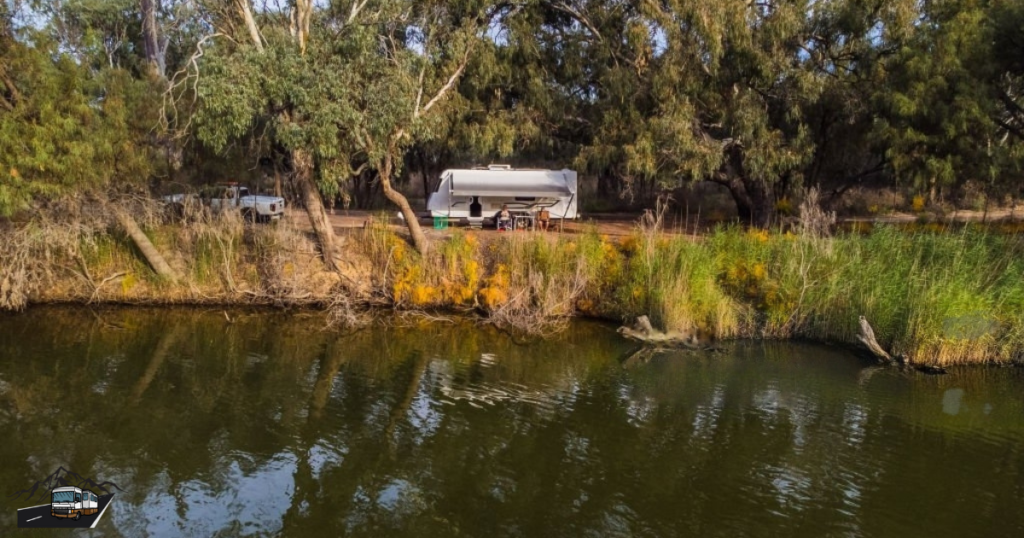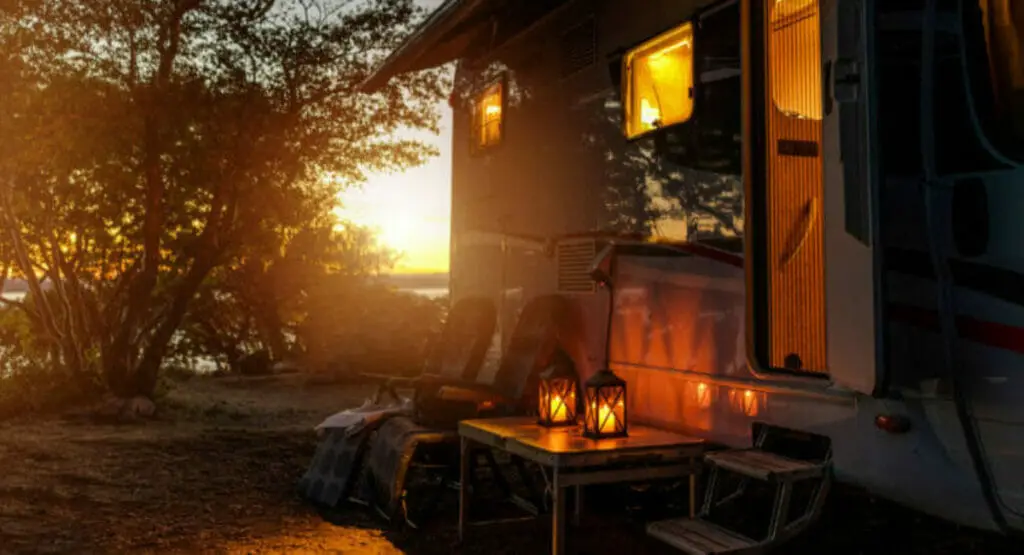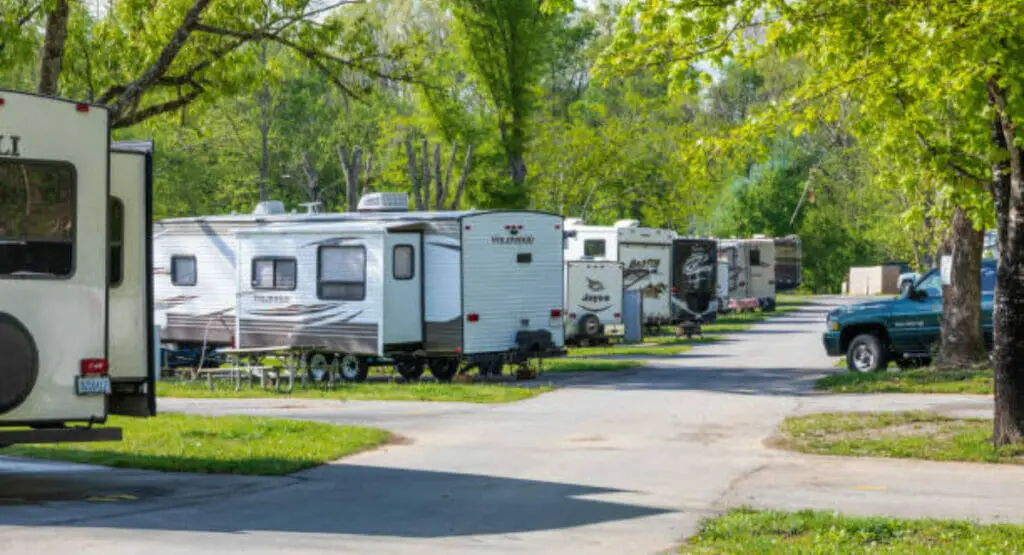Embarking on a road trip in your RV is an exhilarating experience, but what happens when you encounter challenges filling your freshwater tank? In this article, we’ll delve into the common problems RV enthusiasts face when refilling their freshwater supply and explore practical solutions to ensure a seamless journey.
Understanding Your RV’s Freshwater System
1. Components of the Freshwater System
It’s similar to comprehending the intricate anatomy of a lifeline when it comes to your RV’s freshwater system. Consider the freshwater system in your RV as a network of vital organs, with tanks, pumps, and pipes all working in concert to maintain a constant supply of clean water as you travel.
a. Understanding Pipes: The Veins of the System: Your RV’s pipes move water in a manner similar to how veins do with blood. Investigate the various pipe types used in your freshwater system and the effects of the materials used on water flow and quality.
b. Pumps: The Heartbeat of Your Water Supply Pumps are essential for moving water around. Explore the different types of pumps used in RVs, their uses, and troubleshooting advice to keep the system’s heart beating strong.
c. Tanks: The Reservoirs Holding the Lifeblood The vital resource for your trip is kept in the freshwater tanks of your RV. Learn about the different tank types, their capacities, and the best ways to keep them clean.
d. The Interplay: How Parts Work Together: It’s important to comprehend how tanks, pumps, and pipes work together. Investigate the interactions between these three to ensure a smooth water flow from tank to tap.
2. Common Freshwater Tank Types
For a trouble-free trip, it’s essential to investigate the range of freshwater tanks available for your RV and comprehend how their construction details may affect the filling procedure.
1. Knowing about Plastic Tanks: RVs frequently use plastic tanks because they are strong and lightweight. Explore the advantages and limitations of plastic tanks while learning how their design affects how quickly and easily they can be filled.
2. Steel Tanks: Strong Options: Steel tanks, known for their durability, are chosen by some RVs. Examine the benefits and drawbacks of steel tanks, as well as how their durable construction affects the dynamics of filling.
3. Adaptable Bladder Tanks: Flexible Bladder Tanks: Explore flexible bladder tanks, a flexible option for some RV owners. Discover the special design features that may have a positive or negative effect on the filling process.
4. Tanks of Different Sizes: Small vs. Large: Size is a key consideration. Be aware of how the size of your freshwater tank, whether it is small and portable or large and stationary, affects both its capacity and the time and effort needed to fill it.
3. Importance of Regular Maintenance
The key to a trouble-free trip is highlighting the crucial importance of routine maintenance in keeping your RV’s freshwater system in excellent condition.
1. The Need for Cleanliness: Examine the importance of keeping a freshwater system clean. Discover the dangers of disregarding cleanliness as well as useful advice for keeping your water pristine.
2. Sediment and Residue: Preventing Buildup: Examine the specifics of preventing sediment and residue buildup in your freshwater tank. Recognize the effects of carelessness and learn quick maintenance procedures to keep your system in good working order.
3. Considering wear and tear: You can avoid serious problems by getting regular inspections. Discuss the significance of regular inspections for damage to pumps, tanks, and pipes. Discover early warning signs of trouble and take action right away.
4. Winterization: Essential for Upkeep: Winterization is essential in colder climates. Discover the importance of winterizing your freshwater system, avoiding damage from freezing, and making sure your RV is prepared for action when the weather warms up.
Identifying Common Problems
4. Slow Filling: A Frustrating Challenge
On a road trip, the annoying problem of slow filling can make you frustrated instead of excited. Let’s investigate the causes of this slow water flow and consider workable solutions to resolve this annoying problem.
Potential Reasons for Slow Filling
1. Clogged Pipes: Debris and sediment can build up in your pipes over time, reducing water flow.
2. Faulty Pressure Regulator: A faulty pressure regulator may prevent water from entering your freshwater tank normally.
3. Insufficient Water Pressure: Low water pressure in campgrounds may cause slow filling.
Practical Resolution Advice
1. Examine and clean the pipes: Check and clean your pipes frequently to make sure there are no obstructions. To get rid of any buildup, run a pipe cleaner or use a flushing solution.
2. Examine the pressure regulator: Check to see if your pressure regulator is working. If it’s broken, think about replacing it to get the water flowing properly again.
3. Ensure Adequate Water Pressure: When filling, pick campsites with good water pressure. To maintain optimal flow, if necessary, invest in a hose with an integrated pressure regulator.
5. Overflow Problems
Having to deal with water that is overflowing from your RV can be wasteful and messy. Let’s investigate the causes of overflow issues and practical solutions to handle them.
Causes of Overflows Often Found
1. Tank Sensor Error: An incorrect reading from a tank sensor could result in overfilling.
2. Inaccurate Level Indication: Unintentional overflows may occur as a result of incorrect level readings.
3. Blockage in the Ventilation System: A blocked vent can throw off the equilibrium of air pressure and lead to an overflow of water.
Successful Overflow Management Techniques
1. Install an Overflow Prevention Device: To prevent the water supply from being automatically cut off when the freshwater tank is full, think about installing an overflow prevention device.
2. Regularly Calibrate Tank Sensors: To ensure precise level readings and avoid overflows, calibrate your tank sensors frequently.
3. Check and Clean the Ventilation System: Regularly check the ventilation system for obstructions and clean them out to keep the proper balance of air pressure.
6. Strange Noises During Filling
Your RV water routine may become a cacophony due to the symphony of strange noises and vibrations that occur during the filling process. Let’s analyze the strange noises and look at possible solutions to get your freshwater filling experience back to normal.
How to Recognize Strange Sounds
1. Gurgling or gurgle-like noises: These are frequently caused by air bubbles in the pipes.
2. Whining at a high pitch: This could be a sign of a water pump problem.
3. Rumbling or vibrating: Indicates turbulent water flow or irregular pressure conditions.
Methods for Troubleshooting
1. Bleed Air Pockets: Open faucets briefly to release the air trapped in the pipes, preventing gurgling noises.
2. Examine the Water Pump: Look inside the Water Pump for any loose or broken parts. Adjust loose fittings or think about having a professional inspection.
3. Water pressure adjustment: Reduce vibrations by adjusting water pressure. A pressure regulator that can be adjusted is a useful addition.
7. Leaks and Drips
Your RV’s telltale signs of drips and leaks may be cause for concern. It’s essential to take care of these problems right away if you want to save water and keep your freshwater system functioning properly. Let’s explore potential causes and detailed fixes.
Possibilities for Leaks and Drips’ Causes
1. Loose Hose Connections: As time passes, hose connections to fittings may loosen.
2. Damaged Seals or Gaskets: Wear and tear on seals or gaskets can cause leaks.
3. Cracks in the Tank: Cracks in the tank can occur as a result of aging or impact, causing water to leak.
Solutions in Steps
1. Tighten Hose Connections: To prevent leaks, check and tighten hose connections on a regular basis. For added security, use thread seal tape.
2. Examine the seals and gaskets: Look for signs of wear on seals and gaskets. To ensure a watertight seal, replace any damaged components.
3. Tank Examination: Inspect the freshwater tank for cracks thoroughly. If a problem is discovered, contact a professional for repair or replacement.
Solutions to Enhance the Filling Process
8. Upgrading Your Freshwater System
Improving the performance of your RV’s freshwater system necessitates the use of advanced technologies and strategic upgrades. Let’s look at some of the new technologies that can improve the efficiency of your RV’s freshwater filling experience.
Water Management Systems that are Smart
1. Smart Flow Regulators: Use intelligent flow regulators that adapt to changing water pressures, ensuring a consistent and efficient fill.
2. Water Usage Monitoring: Install systems that monitor water consumption and provide insights for better conservation and management.
Water Pumps with a High Flow Rate
Upgrade to high-flow water pumps for faster, more efficient water transfer. These pumps can drastically reduce the amount of time it takes to fill your freshwater tank.
Improved Hose Systems
Purchase hoses that are specifically designed for high water flow and durability. Reinforced hoses made of kink-resistant materials can help to speed up the filling process.
9. Installing a Water Softener
Softening the water in your RV can have a significant impact on both the system and your overall road trip experience. Let’s look at the benefits of installing water softeners in terms of preventing clogs and improving the performance of your freshwater system.
Mineral Buildup Prevention
Water softeners effectively reduce the mineral content of hard water, preventing scale and sediment buildup in pipes and tanks.
Improving Appliance Durability
Softened water is gentler on appliances, including the water system in your RV. Water softeners extend the life and efficiency of your equipment by reducing mineral deposits.
Improving Water Quality
Enjoy better-tasting, odorless water. Water softeners do more than just prevent clogs; they also improve the overall quality of the water you use for cooking, drinking, and bathing.
Reduced Maintenance Frequency
With fewer mineral deposits to contend with, the need for pipe, pump, and tank maintenance and cleaning is significantly reduced, saving you time and effort.
10. Using External Water Filters
Maintaining the quality of your RV’s water is critical, and external water filters play an important role in ensuring a clean and safe water supply while traveling. Let us shed some light on the significance of these filters in preserving water quality and preventing contaminants.
Water Purity Watchdogs
External water filters serve as vigilant defenders, standing between your RV and potential contaminants that may lurk in campsite water sources. They are your first line of defense against impurities that could taint the taste and safety of your water.
Sediment and Particle Removal
External filters’ primary function is to trap sediment, particles, and debris in the water. They prevent these impurities from entering your RV’s freshwater system, protecting pipes, pumps, and tanks from damage.
Protection Against Potentially Harmful Microorganisms
External filters protect against harmful microorganisms in addition to physical debris. Some advanced filters use bacteria and parasite-targeting technologies, ensuring that your water is not only clear but also microbiologically safe.
Improved Taste and Odor
Aside from the practical benefits, external filters make drinking water more enjoyable. They enhance the taste of water by removing chlorine and other unpleasant odors, transforming ordinary water into a refreshing and mouth-watering delight.
Increase the Life of Your RV’s Water System
External filters extend the life of your RV’s water system by preventing contaminants from entering it. Clean water reduces pipe and fitting wear and tear, reducing the frequency of maintenance and potential repairs.
Installation and upkeep are simple.
Most external water filters are designed to be simple to install and maintain. They are simple to use, allowing RV owners to easily replace cartridges or clean filters as needed, resulting in a consistent and dependable filtration process.
Considerations for Filter Selection
1. Filter Micron Rating: Choose a filter with an appropriate micron rating based on the level of filtration required.
2. Filter Lifespan: Consider the longevity of the filter and its replacement frequency.
3. Compatibility: Ensure the filter is compatible with your RV’s water system and meets any specific requirements.
DIY Tips for RV Enthusiasts
11. DIY Inspection and Troubleshooting
It is critical to equip RV owners with the knowledge and skills to conduct DIY inspections and troubleshooting for a trouble-free journey. Let’s look at some simple yet effective tips for RV owners to independently inspect and repair their freshwater system.
Pipe and Connection Inspection
1. Visual Inspections: Inspect pipes on a regular basis for visible signs of wear, corrosion, or damage.
2. Check Water Flow and Pressure at Faucets: Run water through faucets to identify potential blockages or irregularities.
3. Unusual Sounds: Turn on the water pump and listen for any unusual noises that could indicate air pockets or pump problems.
4. Check for Leaks: Inspect all connections for leaks, especially around joints and fittings.
Troubleshooting Suggestions
1. Slow Filling: If filling is taking too long, check for kinks in the hose and make sure the water source has enough pressure.
2. Pipes with air: Open faucets and allow water to flow until air is expelled to bleed air pockets.
3. Inconsistent Pressure: To maintain consistent pressure, clean or replace the water pump’s filter.
4. Strange Noises: Check the water pump for loose connections or damaged components. Tighten or replace as required.
12. Checking Hose Connections
Secure hose connections are essential for preventing leaks and facilitating efficient water filling in your RV. Let’s go over a step-by-step procedure for effectively checking and securing hose connections.
Step 1: Shut off the water supply.
Before inspecting hose connections, turn off the RV’s water supply. This provides a safe and dry environment for testing.
Step 2: Visual Examination
1. Check the Hose for Damage: Examine the hoses for cuts, abrasions, and signs of wear. Replace damaged hoses as soon as possible.
2. Examine the Fittings: Inspect the fittings for corrosion or rust. Fittings should be cleaned or replaced as needed.
Step 3: Tightening Joints
1. Tightening Connections by Hand: Initially, tighten all connections by hand.
2. Wrenches can be used for additional tightening: Wrenches can be used to provide an extra secure tightening. Overtightening can cause fittings to break.
Step 4: Conduct a Water Test
1. Switch on the water supply: Turn on the water supply gradually to check for leaks.
2. Examine Each Connection: Examine each connection point for signs of water leakage.
Step 5: Dealing with Leaks
1. Identify the Leak Source: If leaks are discovered, determine the source. It could be a faulty connection or a faulty hose.
2. Replace or re-tighten: To ensure a secure seal, tighten loose connections or replace damaged hoses.
13. Cleaning and Flushing the Tank
The cleanliness of your RV’s freshwater tank is critical for a sanitary and efficient water system. Let’s get into detail about the proper cleaning and flushing procedures for keeping a pristine and functional freshwater tank.
Cleaning Procedure in Steps
Step 1: Drain the Tank
1. Turn Off Water Supply: Make sure the tank’s water supply is turned off.
2. Open Faucets: Open all faucets in the RV to release pressure and drain the water from the tank.
Step 2: Construct a Cleaning Solution
1. Use RV-Friendly Cleaners: To avoid damage, use cleaners designed specifically for RV freshwater systems.
2. Dilute according to package directions: To make a solution, follow the instructions on the cleaner. A cleaner and water mixture is usually recommended.
Step 3: Make use of the Cleaning Solution
1. Pour into the Tank: Carefully pour the cleaning solution into the freshwater tank through the appropriate inlet.
2. Agitate while closing the tank: Close the tank, making certain that all valves and openings are secure. Drive the RV gently or agitate the cleaning solution inside the tank with the motion.
Step 4: Allow Time for Soaking
1. Follow the cleaning instructions: The recommended soaking time can be found in the cleaner’s instructions. This enables the solution to dissolve deposits and contaminants.
2. Excessive Soaking: Do not soak for longer than recommended, as this may damage the tank or its components.
Step 5: Thoroughly rinse
1. Flushes with Fresh Water: After soaking, thoroughly rinse the tank with clean water. Allow water to run through the faucets until the cleaning solution is completely flushed out.
2. If necessary, repeat: If residues remain, repeat the cleaning procedure until the tank is clean.
Flushing Regular Maintenance Routine
I. Flushing Schedule on a Regular Basis
Monthly Flush: Consider a monthly routine for preventative maintenance.
After Long Storage: If the RV has been in storage for an extended period, perform a thorough tank flush before use.
II. Make use of the Tank Flush System.
1. Tank Flush Valves: Some RVs include tank flush valves. Use these to make cleaning more efficient and thorough.
2. Attach a Hose: Connect a hose to the tank flush valve and run clean water through the system to remove any remaining residues.
III. Examine for Residues and Odors
1. Visual Examination: Inspect the tank’s interior on a regular basis for residues or discoloration.
2. Address Odors As Soon As Possible: If the unpleasant odors persist, consider using odor-eliminating tank cleaners.
Conclusion
To summarize, while issues with filling freshwater in your RV may appear daunting, armed with knowledge and practical solutions, you can reduce these challenges to minor inconveniences. Regular maintenance, quick troubleshooting, and the use of modern upgrades can all contribute to a smooth and trouble-free driving experience.



